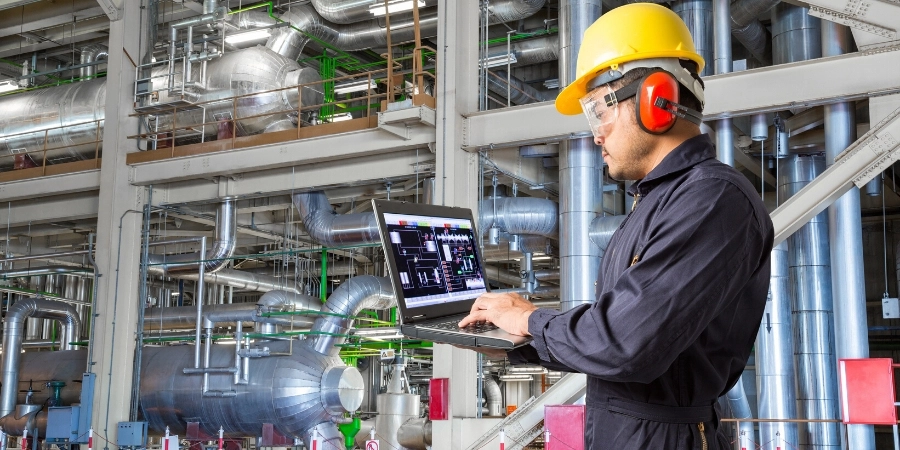In the world of modern industry, a powerful blend of innovative technologies has reshaped the way things work. One standout technology in this mix is the Internet of Things (IoT), which has left a profound mark on various fields, from manufacturing and energy to transportation and healthcare. Among its many applications, the IoT has emerged as a game-changer for predictive maintenance.
Getting to Know Predictive Maintenance
In the past, industries relied on two main strategies to keep their equipment running: scheduled maintenance and reacting to breakdowns. While scheduled maintenance keeps things in check, it often leads to unnecessary downtime and costs. On the flip side, reactive maintenance addresses issues as they happen, but it can result in longer downtime and higher repair bills. This is where predictive maintenance steps in, aiming to find the sweet spot by using data-driven insights to predict when equipment might run into trouble.
The idea behind predictive maintenance is to continuously monitor equipment using sensors and other data collectors. These gadgets keep an eye on how equipment is doing and analyze both real-time and historical data. By doing so, predictive maintenance systems can spot patterns and oddities that signal upcoming breakdowns or a drop in performance.
IoT’s Role in Predictive Maintenance
IoT plays a crucial role in making predictive maintenance effective and efficient in several ways:
Real-time Data Gathering: IoT sensors keep a constant watch on equipment conditions, noting things like temperature, vibrations, and fluid levels. This steady stream of data helps pick up even the tiniest changes that could be signs of trouble.
Monitoring from Afar: Thanks to IoT, maintenance teams can keep tabs on equipment performance from anywhere. This comes in handy, especially for equipment situated in far-off or risky environments.
Smart Analysis with Machine Learning: The data collected by IoT gadgets gets processed through fancy analytics and machine learning tools. These tools pick up on patterns and oddities, learning from past data to make predictions more accurate and reduce false alarms.
Maintenance Based on Condition: Predictive maintenance switches things up by scheduling fixes based on real need rather than a set timeframe. This minimizes downtime and unnecessary maintenance.
Savings Galore: The beauty of predictive maintenance is that it slashes downtime and unplanned expenses. By nipping problems in the bud, it prevents disruptions in production and those pricey emergency fixes.
Smarter Resource Use: With insights from IoT sensors, maintenance teams can deploy their resources more wisely. Spare parts and maintenance workers can be sent where and when they’re most needed.
Real-world Examples
IoT-powered predictive maintenance isn’t just a dream – it’s a reality with practical benefits:
Manufacturing: In factories, IoT sensors keep an eye on machines. This means that potential problems can be tackled before they cause long and costly shutdowns.
Energy: Power plants rely on IoT sensors to watch over turbines and generators. By catching deviations in how they work, maintenance can be planned during scheduled downtime.
Transportation: Vehicles and airplanes are outfitted with IoT sensors to predict maintenance needs for engines, brakes, and other vital parts. This keeps things running smoothly and passengers safe.
Healthcare: Hospitals use IoT devices to monitor medical equipment. This ensures that life-saving devices are in top shape when they’re needed most.
Startups in this domain:
Zenatix Solutions: Zenatix focuses on energy management and predictive maintenance for the retail and BFSI (Banking, Financial Services, and Insurance) sectors. They offer an IoT-based platform that enables businesses to monitor and control their energy consumption, leading to cost savings and improved sustainability.
UtopiaTech: UtopiaTech specializes in providing predictive maintenance solutions for the railway industry. Their IoT-based system gathers data from sensors installed on railway tracks and components, allowing maintenance teams to identify potential issues and optimize maintenance schedules.
Challenges and Things to Keep in Mind
While IoT’s role in predictive maintenance is impressive, there are some hurdles to clear:
Security Concerns: Keeping all the data collected by IoT devices safe is crucial to prevent unauthorized access and cyber threats.
Data Quality Matters: Accurate predictions rely on solid data. Making sure data is accurate and dependable is key to successful predictive maintenance.
Getting Everything to Work Together: Integrating IoT devices with existing systems and making sure they jive with older equipment can be a bit of a puzzle.
Skills Gap: To make the most of IoT devices, organizations need skilled professionals who can handle, analyse, and make sense of the data they generate.
By bringing IoT and predictive maintenance together, industries are changing the game. With real-time data, smart analytics, and machine learning, they’re slashing downtime, making the most of resources, and giving equipment a longer lease on life.
As technology keeps evolving, IoT-powered predictive maintenance will stay a cornerstone of top-notch operations, making sure things run smoothly and cost-effectively across a wide range of industries.
















Leave a comment